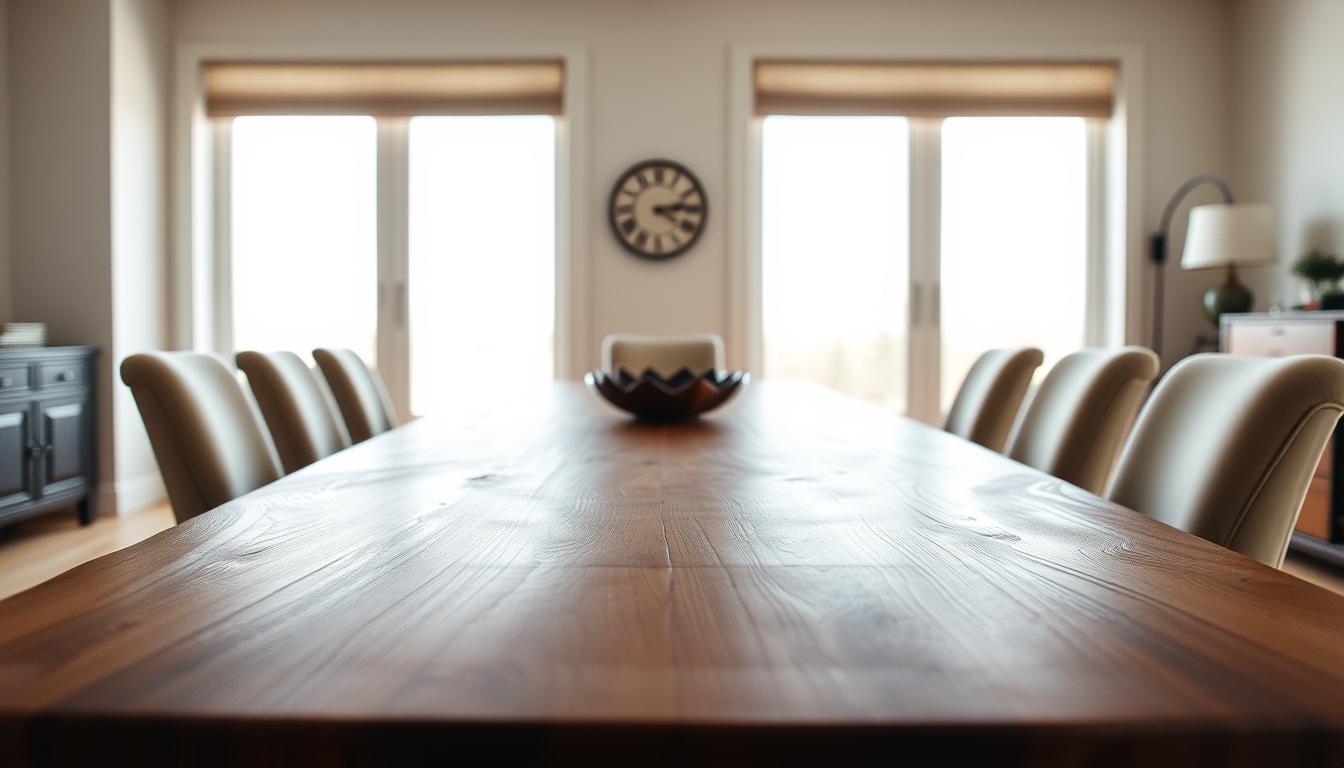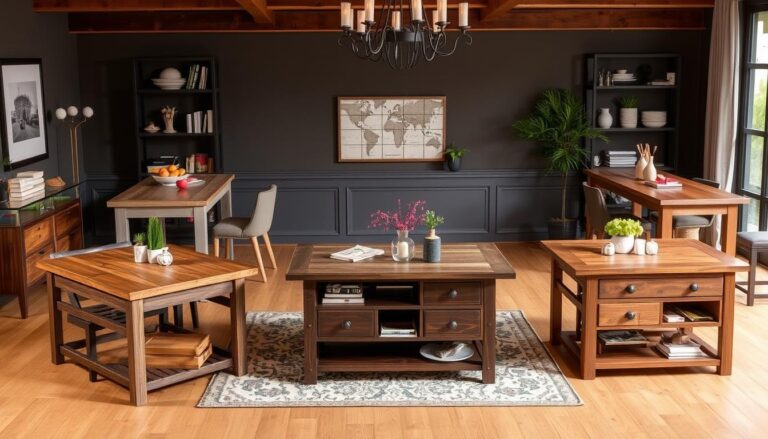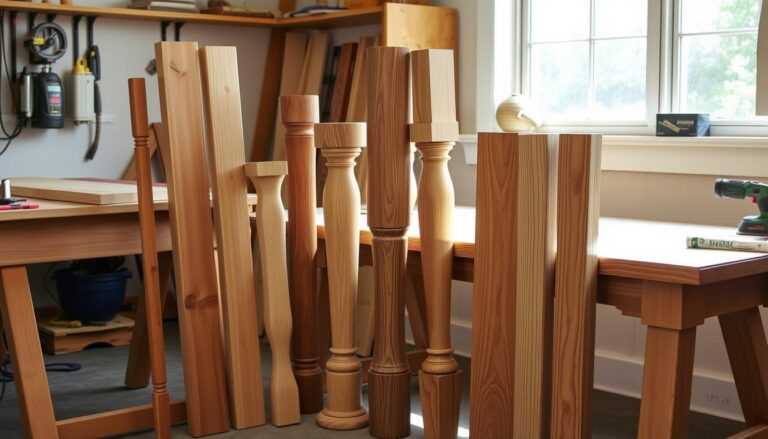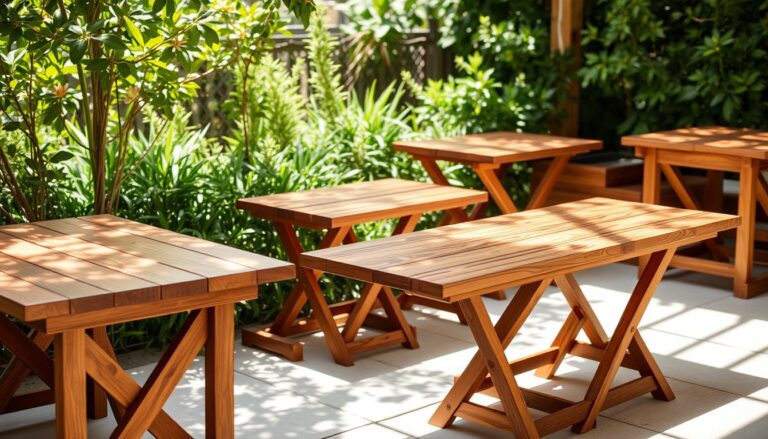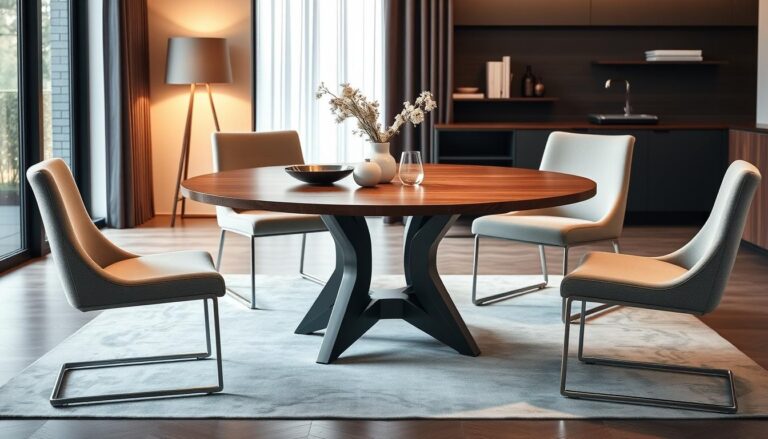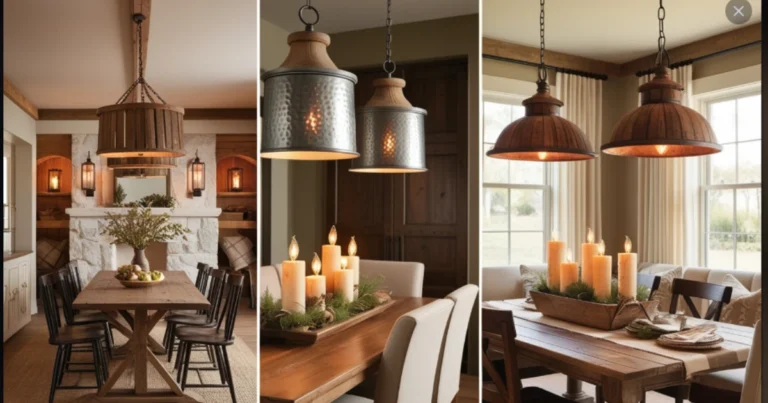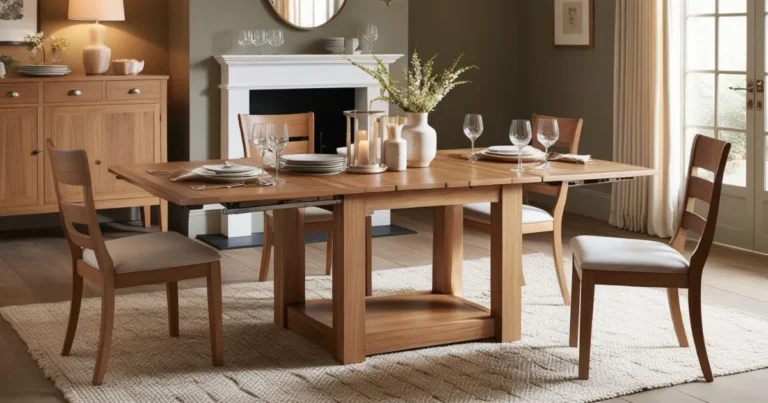Walnut Dining Table Styles, Sizes, Care & Buying Tips
Did you know a walnut dining table can boost your home’s value? It also serves as a central spot for family and social events. The dark tones of walnut wood add warmth and elegance to any dining room.
Choosing the right walnut table can be tough. There are many styles and sizes to pick from. Whether you need something modern or traditional, there’s a walnut dining table for every space.
Knowing how to care for your table and what to look for when buying is key. This helps you find the perfect centerpiece for your home.
Key Takeaways
- Popular styles of walnut dining tables
- Size considerations for different rooms
- Care tips to maintain the wood’s quality
- Essential factors to consider when buying
- Benefits of choosing a walnut dining table
The Enduring Charm of Walnut Wood in Dining Furniture
Walnut wood has a rich history and timeless charm. It’s perfect for making dining tables that are both beautiful and long-lasting.
Why Walnut Stands Out Among Hardwoods
Walnut wood is known for its durability and stability. It’s a favorite among furniture makers. Its dense grain makes it strong and resistant to damage. Plus, its rich colors add sophistication to any room.
Furniture expert,
“Walnut wood’s versatility and aesthetic appeal have made it a staple in fine furniture making for centuries.” –
A solid walnut dining table is not just furniture. It’s a family treasure.
| Characteristics | Walnut Wood | Other Hardwoods |
|---|---|---|
| Durability | High | Variable |
| Aesthetic Appeal | High | Variable |
| Workability | Moderate | Variable |
The Rich Heritage of Walnut in Fine Furniture
Walnut has been used in fine furniture since the 17th and 18th centuries. It’s known for making beautiful dining tables, especially black walnut dining tables.
To keep your walnut dining table looking great, follow proper walnut dining table care.
For more maintenance tips, read our 7 essential tips to protect your walnut table.
Clean it regularly, polish it, and protect it from heat and moisture. This way, your table will stay beautiful for many years.
Popular Walnut Dining Table Styles for Your Home
Choosing the right walnut dining table is important. It should match your home’s style. This choice greatly affects your dining area’s look.
Explore our best walnut dining room sets with captain chairs for a complete matching look.
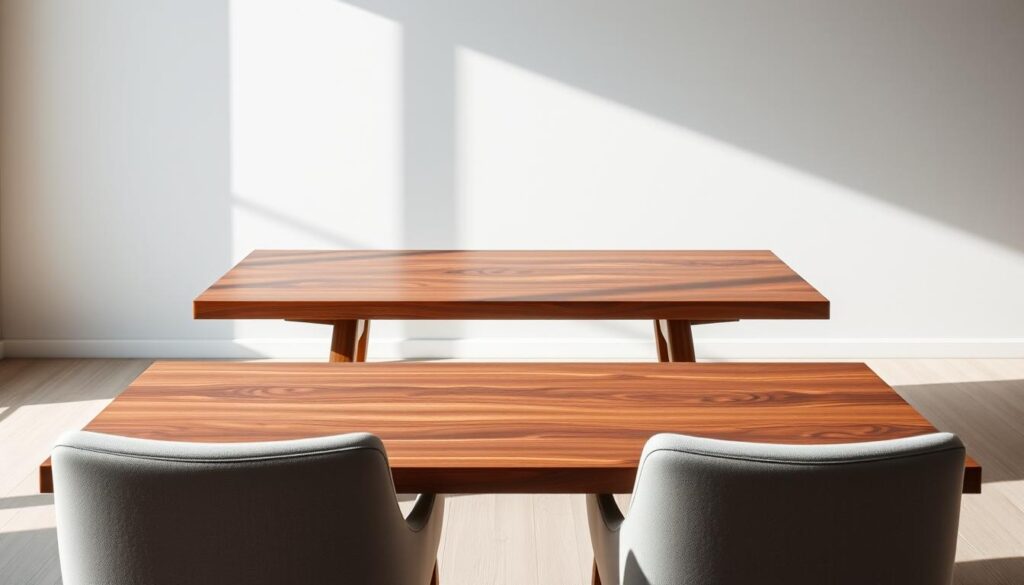
Rustic Walnut Dining Tables
Rustic walnut dining tables add warmth and coziness. They have a distressed look and natural feel. These tables are great for those who love natural wood and its imperfections.
Key Features: Distressed finish, natural texture, warm ambiance.
Modern Walnut Dining Tables
Modern walnut dining tables offer a sleek look. They have clean lines and focus on the walnut wood’s beauty. These tables bring sophistication to your dining area.
Benefits: Sleek design, contemporary feel, highlights the walnut wood’s natural beauty.
Traditional and Classic Walnut Tables
Traditional and classic walnut tables are always in style. They have intricate carvings and rich finishes. These tables add elegance to your dining space.
- Intricate carvings
- Ornate details
- Rich finish
Mid-Century Walnut Dining Tables
Mid-century walnut dining tables mix modern and traditional. They have simple yet elegant designs. These tables are perfect for a unique dining area.
Characteristics: Simple design, elegant feel, retro aesthetic.
Black Walnut Dining Tables
Black walnut dining tables have a dark, rich color. They create a dramatic and sophisticated dining space. The dark wood adds depth and contrast.
“A black walnut dining table can be a stunning centerpiece for your dining room, adding a touch of luxury and sophistication.”
Discover our curated list of the best black walnut tables for modern dining rooms.
Interior Design Expert
| Style | Characteristics | Ideal For |
|---|---|---|
| Rustic | Distressed finish, natural texture | Cozy, welcoming atmosphere |
| Modern | Clean lines, minimal ornamentation | Sleek, contemporary look |
| Traditional/Classic | Intricate carvings, ornate details | Elegant, timeless appeal |
| Mid-Century | Simple design, elegant feel | Retro aesthetic, unique style |
| Black Walnut | Dark, rich color | Luxurious, sophisticated ambiance |
Finding the Perfect Walnut Dining Table Shape
Walnut dining tables come in many shapes. Each shape has its own benefits for different dining spaces. The right shape can make your dining area look better and work better too.
Rectangular Walnut Tables: The Classic Choice
Rectangular walnut dining tables are always in style. They fit well in both formal and casual dining areas. They’re great for big spaces and can seat lots of people.
Round and Oval Walnut Tables: Space-Efficient Elegance
Round walnut dining tables make your dining area feel cozy.They’re perfect for small spaces or if you want to make sure everyone talks. Oval tables are a mix of round and rectangular. They add elegance and flexibility to your dining area.
Take a look at our top 7 round walnut dining tables for 2025 to get inspired.
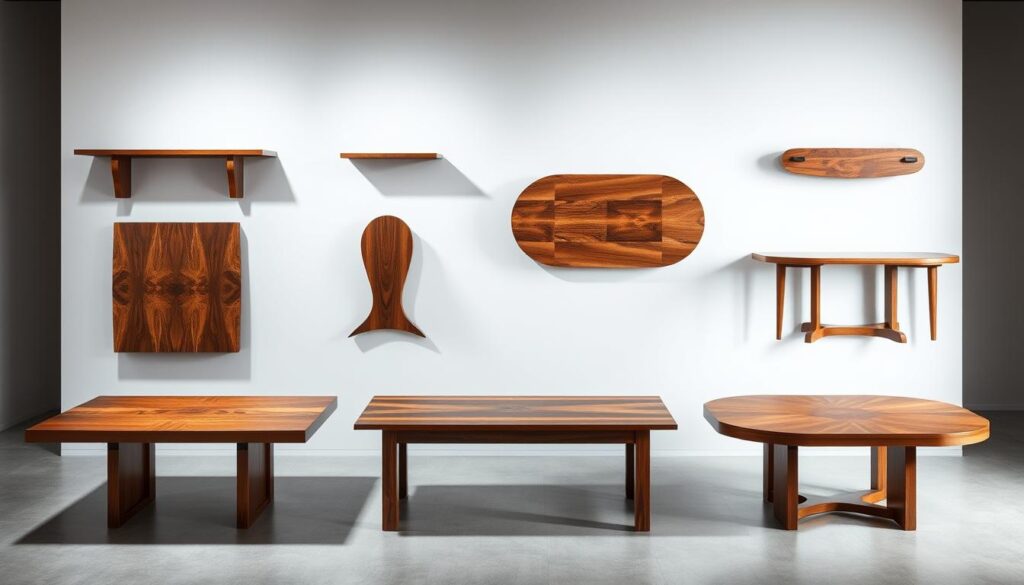
Square Walnut Dining Tables: Intimate Dining Solutions
Square walnut dining tables are great for small, cozy gatherings. They’re perfect for kitchens with a small dining area.
| Table Shape | Ideal for | Advantages |
|---|---|---|
| Rectangular | Large spaces, formal dining | Accommodates many guests, classic look |
| Round/Oval | Smaller spaces, casual dining | Encourages conversation, elegant |
| Square | Small, intimate gatherings | Cozy atmosphere, space-efficient |
Walnut Dining Table Sizes and Seating Capacity Guide
Finding the right walnut dining table size can make your dining area more welcoming and useful. It’s key to pick a size that fits your space and meets your dining needs.
2-Seater and 4-Seater Options for Small Spaces
2-seater and 4-seater walnut dining tables are great for small areas. They are usually 24 to 48 inches in diameter for round tables or 36 to 60 inches long for rectangular ones. They’re ideal for small kitchens or apartments.
6-Seater Walnut Dining Tables for Medium Rooms
A 6-seater walnut dining table is perfect for medium-sized dining rooms. These tables are 72 to 90 inches long and 36 to 42 inches wide. They offer enough room for family dinners and fit six people comfortably.
8-Seater and Larger Tables for Entertaining
For those who love hosting dinner parties, an 8-seater or larger walnut dining table is a good choice. These tables are 96 inches or more long, offering plenty of space for eight or more guests. They’re great for bigger dining rooms or for frequent entertaining.
Comprehensive Dimensions Chart for Walnut Tables
Here’s a detailed chart to help you pick the right size for your walnut dining table:
| Seating Capacity | Table Shape | Typical Dimensions (inches) |
|---|---|---|
| 2-Seater | Round/Rectangular | 24-36 diameter / 24-36 x 24-36 |
| 4-Seater | Round/Rectangular | 36-48 diameter / 48-60 x 30-36 |
| 6-Seater | Rectangular | 72-90 x 36-42 |
| 8-Seater | Rectangular | 96-120 x 36-42 |
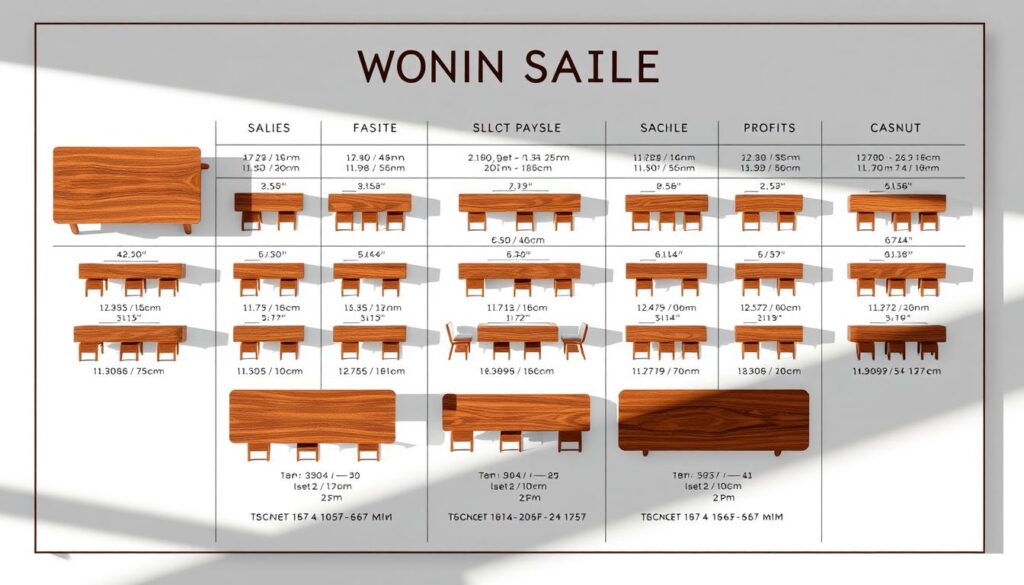
Using this chart, you can find the right size for your walnut dining table. It’s based on your seating needs and the space you have.
How to Measure Your Space for a Walnut Dining Table
Measuring your space is key to finding the perfect walnut dining table. It should match your home’s look and function. A table that fits well makes your dining area more beautiful and safe.
Step-by-Step Room Measurement Process
Start by clearing your dining area of clutter and furniture. Use a tape measure to get the room’s length and width. Think about doors, windows, and other features that might affect where you can put your table.
Also, remember heating vents, electrical outlets, and other elements that could change your table’s spot.
Choose the table shape you like and measure for it. For a rectangular table, make sure you have enough space. Sketch your room and the table’s spot on floor plan or graph paper. This helps you see if there’s enough room for chairs and moving around.
Essential Clearance Requirements
Having enough space around your table is key for comfort and safety. Aim for at least 36 inches of clearance from walls or obstacles. This lets you easily pull out chairs and move around without feeling tight.
If your table is big or your space is small, you might need less clearance. But keep in mind, less space can make moving harder.
| Table Shape | Minimum Clearance | Ideal Clearance |
|---|---|---|
| Rectangular | 30 inches | 36 inches |
| Round | 30 inches | 36 inches |
| Oval | 30 inches | 36 inches |
Planning for Traffic Flow Around Your Table
Thinking about how people will move around your table is just as important as measuring it. Make sure your table doesn’t block paths. In busy areas, a round or oval table might be better. They help people move more easily.
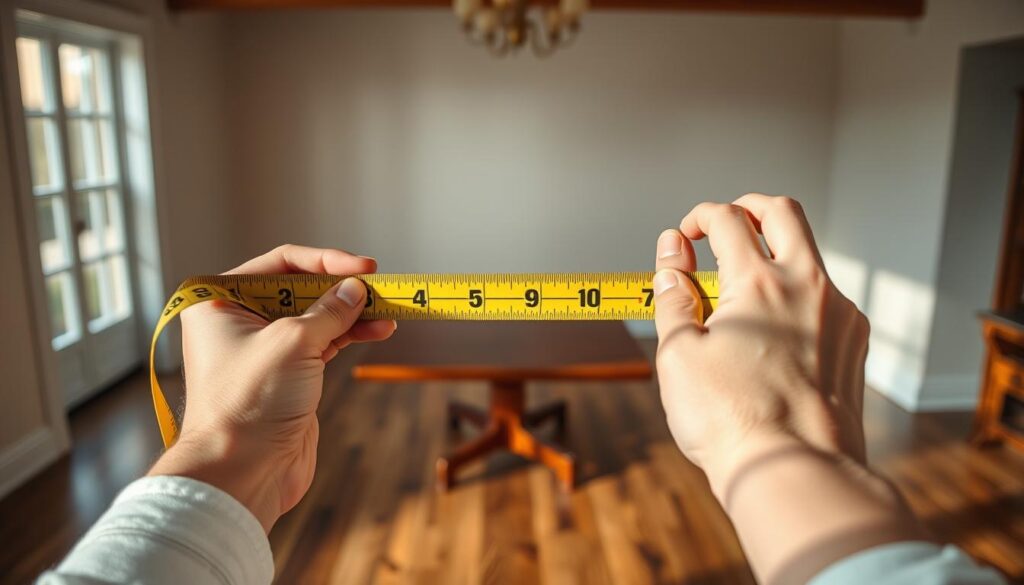
By measuring carefully, thinking about clearance, and planning for movement, you can find a walnut dining table that’s perfect for your space. It will also make dining more enjoyable.
Extendable Walnut Dining Tables: Versatility for Every Occasion
Extendable walnut dining tables are perfect for those who love hosting. They can change size to fit any party or guest list. This makes them great for homes that often have dinner guests.
An extendable walnut dining table can grow or shrink as needed. It’s perfect for big family dinners or cozy nights for two. You can adjust it to fit your space and guest list.
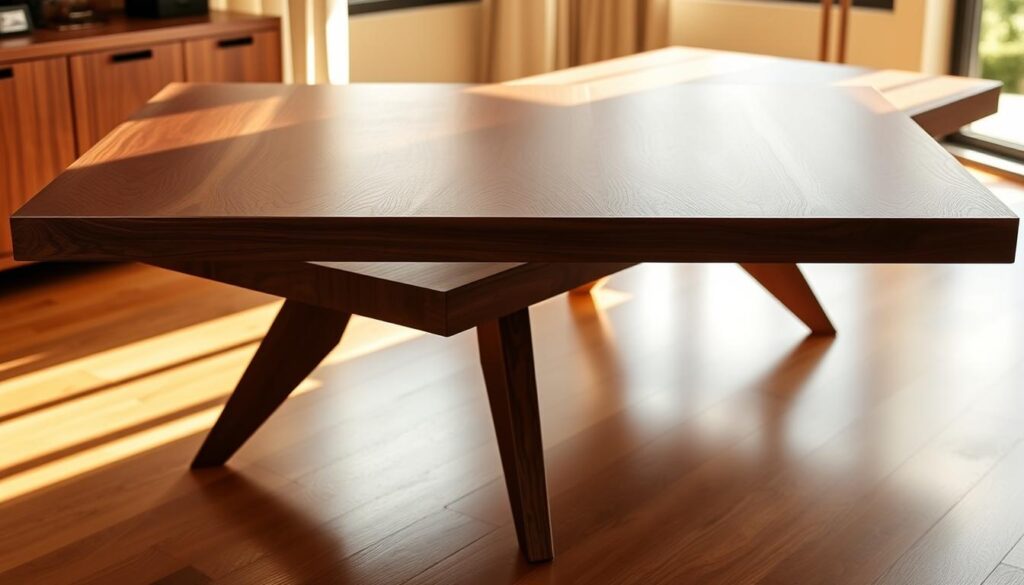
Types of Extension Mechanisms Explained
Choosing the right extension mechanism is key for an extendable walnut dining table. You can pick from slide-extension, butterfly leaf, or pull-out extension. Each has its own benefits.
Slide-extension tables are easy to use. Butterfly leaf tables add elegance. Think about what you need and choose wisely.
Drop-Leaf and Gate-Leg Space-Saving Options
Drop-leaf and gate-leg walnut dining tables are great for small spaces. They let you adjust the table size as needed. This is perfect for tight dining areas.
Drop-leaf tables have hinged sections that fold down. Gate-leg tables have legs that swing out to support leaves. Both save space and are easy to use.
Maintenance Tips for Extension Hardware
To keep your extendable walnut dining table in top shape, maintain the extension hardware. Clean and oil the mechanisms, check for damage, and tighten loose parts. This keeps your table working well for years.
By following these tips, your extendable walnut dining table will stay beautiful and functional. Enjoy it for many meals to come.
How to Care for Your Walnut Dining Table
Keeping your walnut dining table in top shape is key to its beauty and longevity. A well-cared-for walnut table stays beautiful and functional for years. It requires regular care, from daily cleaning to polishing and repairs.
Daily Cleaning Techniques and Routines
It’s important to clean your walnut dining table every day to stop dust and dirt buildup. Use a soft, dry cloth to wipe it down. For deeper cleaning, a slightly damp cloth works, but dry it right away to avoid water harm. Stay away from harsh chemicals or abrasive cleaners that can harm the wood or finish.
Recommended Daily Cleaning Routine:
- Wipe down the table with a soft, dry cloth.
- For stubborn spots, use a slightly damp cloth, then dry immediately.
- Avoid harsh chemicals and abrasive cleaners.
Products to Use and Harmful Cleaners to Avoid
Choosing the right cleaning products is as crucial as the cleaning method. Go for gentle, wood-specific cleaners that won’t damage the finish or wood. Avoid cleaners with ammonia, bleach, or harsh chemicals. Also, avoid wax-based polishes that can dull the finish over time.
Safe Cleaning Products:
- Gentle wood cleaners.
- Soft cloths.
- Microfiber cloths for dusting.
Step-by-Step Polishing and Finish Protection
Polishing your walnut dining table keeps it looking great and protects the wood. Use a high-quality polish made for walnut or similar hardwoods. Apply it with a soft cloth, covering small sections at a time for evenness. Then, buff the table with a clean, dry cloth to remove excess polish and enhance the finish.

| Polishing Frequency | Benefits |
|---|---|
| Every 1-2 months | Maintains appearance, protects wood. |
| Every 6-12 months | Deep protection, enhances finish. |
Repairing Scratches and Heat Damage
Even with care, your walnut dining table might get scratches or heat damage. Minor scratches can be fixed with a touch-up marker or scratch repair kit. For bigger damage, a professional furniture restorer might be needed. To avoid heat damage, use placemats, coasters, and tablecloths, and don’t put hot dishes directly on the table.
Repair Tips:
- Use touch-up markers for minor scratches.
- Consult a professional for significant damage.
- Prevent heat damage with placemats and coasters.
Preventative Measures for Extending Your Walnut Table’s Life
Keeping your walnut dining table looking great is all about care. A few easy steps can help it stay a key part of your home for years. This way, it will always be a beautiful centerpiece.
Essential Table Accessories: Coasters, Placemats, and Pads
Right accessories can really help your table last longer. Coasters stop water rings and spills. Placemats keep plates and utensils from scratching it. And a table pad adds extra protection, especially when you have lots of guests.
These items do more than just protect your table. They also make your dining area look better. Pick ones that match your table and your home’s style.
Managing Humidity and Temperature Effects
Walnut wood changes with humidity and temperature. This can make it expand or shrink. Keep your home’s climate steady to avoid this.
Don’t put your table near heaters, radiators, or drafty windows. Heat or cold air can harm it.
Seasonal Care Routine Checklist
Here’s a simple care plan for each season:
- Spring: Polish the table to remove winter dullness.
- Summer: Check and adjust the humidity levels in your home.
- Autumn: Clean the table thoroughly before the holiday season.
- Winter: Use a humidifier to combat dry air.
By taking these steps, your walnut dining table will stay beautiful and useful for many years.
Understanding Different Walnut Wood Types
The world of walnut wood is rich and varied. Each type has its own special qualities for your dining table. Walnut wood is loved for its beauty, strength, and deep colors, making it a top pick for furniture.
American Black Walnut: Characteristics and Benefits
American Black Walnut is a favorite among wood lovers. It boasts a rich, dark color and fine grain. This makes it perfect for creating beautiful dining tables. The heartwood ranges from chocolate brown to almost black, with a straight grain that can be wavy or irregular.
This walnut is known for its durability and stability. It’s less likely to warp or crack, making it a reliable choice.
European Walnut: Distinctive Properties
European Walnut, or Juglans regia, is also a favorite for furniture. It has a lighter color than American Black Walnut and a more consistent grain. It’s easy to work with and can be stained to fit different styles.
It’s dense and durable, though not as hard as American Black Walnut.
Claro Walnut and Other Specialty Varieties
Claro Walnut is known for its stunning grain patterns and vibrant colors. It comes from the roots and branches of walnut trees, making it a rare and luxurious option. Other varieties like French Walnut and Italian Walnut also have their own unique looks and qualities.
Sustainable Harvesting and Environmental Considerations
When picking a walnut dining table, think about the environment too. Choose suppliers who harvest walnut sustainably. This means they take care to not harm the environment and help grow new trees.
By picking sustainably sourced walnut, you get a beautiful table and support green forestry practices.
Solid Walnut vs. Veneer Dining Tables: Making the Right Choice
Choosing a walnut dining table means deciding between solid walnut or veneer. Each option has its pros and cons. Knowing these can help you make a smart choice.
Pros and Cons of Solid Walnut Construction
Solid walnut tables are known for their lasting quality and real wood feel. A solid walnut dining table is made from solid walnut wood. This means it can look beautiful for decades with the right care.
The main benefits are:
- Durability: Solid walnut tables can handle a lot of use without getting damaged.
- Authenticity: They give a true wood experience, with a natural look and feel.
- Longevity: With the right care, they can last for many years.
But, solid walnut tables also have some downsides. They cost more and can change shape due to humidity changes.
Quality Walnut Veneers: What to Look For
Walnut veneer tables are cheaper but still look great. When looking for quality walnut veneers, consider these points:
- Thickness: Thicker veneers are more durable.
- Quality of the substrate: Make sure the base material is strong.
- Matching: Choose tables with veneer patterns that match well.
A well-made walnut veneer table is a good choice for those on a budget or who want a flexible dining solution.
How to Identify Each Type When Shopping
Telling solid walnut from veneer tables can be tricky. Here are some tips to help:
| Characteristics | Solid Walnut | Walnut Veneer |
|---|---|---|
| Construction | Made entirely from walnut wood | Thin layer of walnut on a substrate |
| Cost | Generally more expensive | More affordable |
| Durability | High | Moderate to High (depending on veneer quality) |
Understanding the differences between solid walnut and veneer tables helps you choose wisely. It depends on your lifestyle, budget, and preferences.
Complete Walnut Dining Table Sets and Complementary Furniture
For a unified look in your dining area, think about a complete walnut dining table set. A well-matched dining set can make your home feel more welcoming. It’s perfect for family dinners and parties.
Coordinating Walnut Dining Chairs
It’s important to pick the right dining chairs for your walnut table. Walnut dining chairs can be upholstered or all wood, based on what you like. Upholstered chairs are comfy, while solid wood chairs last longer. Make sure the chairs match the table’s style and color.
- Think about the chairs’ height and width compared to the table.
- Choose chairs that go well with the table’s design.
- Upholstered chairs can add color or texture to your dining area.
Matching Buffets, Sideboards, and Storage Options
A matching buffet or sideboard can make your dining area more functional. It provides space for dishes and linens. Walnut buffets and sideboards come in many styles, from modern to traditional. You can find the perfect one for your table.
For a harmonious kitchen and dining space, check out our guide on walnut kitchen cabinets.
When picking a buffet or sideboard, think about your dining area’s size and storage needs. A good choice can keep your area tidy and organized.
Successfully Mixing Wood Types in Your Dining Space
Mixing wood types can make your dining area more interesting. Here’s how to do it right:
- Use walnut as the main wood and other woods as accents.
- Make sure the wood types match in color and grain.
- Find a common element, like metal or fabric, to connect the different woods.
Benefits of Complete Sets vs. Individual Pieces
Choosing a complete walnut dining table set gives a unified look and makes choosing furniture easier. But, buying individual pieces lets you customize more. Think about what matters to you: ease and consistency for a complete set, or a unique look for individual pieces.
It all comes down to your style, budget, and what your dining area needs.
Comprehensive Walnut Dining Table Buying Guide
Buying a walnut dining table requires looking at a few key things. You need to think about your budget, the type of walnut wood, and whether you want a custom or ready-made table.
Budget Expectations and Price Factors
When setting a budget for a walnut dining table, price factors like wood quality, craftsmanship, and size matter a lot. Solid walnut tables cost more than veneer ones, and custom designs add to the price.
A basic walnut dining table can start at $500. But, high-end, custom pieces can go over $5,000. Knowing your budget helps you choose.
| Table Type | Price Range | Characteristics |
|---|---|---|
| Solid Walnut | $1,000 – $3,000 | Durable, long-lasting, can be refinished |
| Walnut Veneer | $500 – $1,500 | Cost-effective, less durable than solid wood |
| Custom Walnut | $2,000 – $5,000+ | Tailored to specific needs, high-quality craftsmanship |
Custom vs. Ready-Made: Pros, Cons, and Considerations
Choosing between a custom walnut table and a ready-made one depends on your needs and preferences. Custom tables are made to fit your exact needs but cost more and take longer to make.
Ready-made tables are cheaper and can be delivered quickly. But, they might not fit your exact size or design perfectly.
How to Verify Authentic Walnut Furniture
To make sure you’re getting real walnut furniture, look for solid walnut construction or high-quality veneer. Check for any certifications or documents from the maker about the wood type and origin.
Looking at the table’s grain pattern and color can also confirm its authenticity. Walnut wood has unique features.
Top Retailers and Craftsmen for Quality Walnut Tables
Many reputable retailers and craftsmen make high-quality walnut dining tables. Visiting local furniture makers or high-end stores can give you insight into their work and materials.
Some top brands focus on hardwood furniture and are known for quality and durability.
Conclusion: The Lasting Value of a Quality Walnut Dining Table
A quality walnut dining table is more than furniture; it’s a long-term investment. Walnut wood adds a unique charm to your dining area. Its rich heritage and distinct look make it a favorite among homeowners.
When choosing a walnut dining table, think about style, size, shape, and care. This way, you’ll find the perfect table for your space. Whether you prefer rustic, modern, or traditional, a quality walnut table will bring joy for years.
The value of a walnut dining table is in its durability and timeless appeal. It can even become a family heirloom. As an investment, its value may grow over time. With the right care, your walnut table will stay beautiful and useful for many years.

